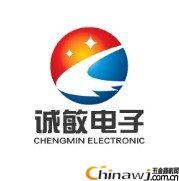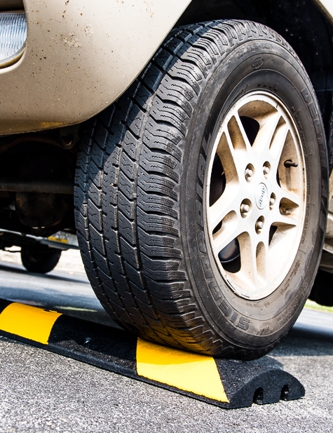The temperature sensor is one of the earliest developed and widely used sensors. Temperature sensors can be divided into three main types: traditional discrete sensors, such as thermocouples, thermistors, thermal diodes, etc.; analog integrated sensors. Acoustic temperature sensors, laser sensors, infrared sensors and microwave sensors have been developed based on the interaction law between waves and matter. The Traffic Safety Store Speed Bump and Speed Hump Buyers Guide
Cost effective, years of high performance with low maintenance
When to use a Speed Hump instead of a Speed Bump?
Selection and application of temperature and humidity sensor
Temperature and humidity are a basic physical quantity, and all processes in nature are closely related to temperature and humidity. The temperature sensor is one of the earliest developed and widely used sensors. Temperature sensors can be divided into three main types: traditional discrete sensors, such as thermocouples, thermistors, thermal diodes, etc.; analog integrated sensors. Acoustic temperature sensors, laser sensors, infrared sensors and microwave sensors have been developed based on the interaction law between waves and matter.
Humidity sensor products and humidity measurement belong to the industry that emerged in the 1990s. How to use the humidity sensor and how to judge the performance of the humidity sensor is still a relatively complicated technical problem for the average user.
When choosing the temperature and humidity sensor, you need to pay attention to the choice of measurement range and measurement accuracy. At the same time, you should also consider the key factors such as time drift and temperature drift. In addition, the humidity sensor is non-sealed. To protect the accuracy and stability of the measurement, it should be avoided in acidic, alkaline and organic solvent-containing atmospheres. How to buy please see the detailed analysis of this article.
1. Select the measurement range and measure the weight and temperature. Select the humidity sensor first to determine the measurement range. In addition to meteorological and scientific research departments, temperature and humidity measurement and control generally do not require full wet range (0-100% RH) measurement.
2. Selecting measurement accuracy Measurement accuracy is the most important indicator of humidity sensor. For every percentage point increase, it is the last step for the humidity sensor, or even the previous grade. Because of the different precisions, the manufacturing costs vary widely, and the selling price is far from the same. Therefore, users must tailor their clothes, and they should not blindly pursue "high, precise, and sharp." If the humidity sensor is used at different temperatures, the indication will also take into account the effects of temperature drift. It is well known that relative humidity is a function of temperature, which severely affects the relative humidity within a given space. The temperature changes by 0.1 °C. A humidity change (error) of 0.5% RH will be produced. In the case of use, if it is difficult to achieve constant temperature, it is not appropriate to propose excessive humidity measurement accuracy. In most cases, the accuracy of ±5% RH is sufficient if there is no precise temperature control or if the space being tested is unsealed. For areas requiring precise control of constant temperature and constant humidity, or where it is necessary to track and record humidity changes at any time, select a humidity sensor with an accuracy of ±3% RH or higher. The requirement that the accuracy is higher than ±2% RH may be difficult to achieve even the standard humidity generator of the calibration sensor, not to mention the sensor itself. Relative humidity measuring instruments, even at 20-25 ° C, to achieve 2% RH accuracy is still very difficult. The characteristics given in the general product data are measured at room temperature (20 ° C ± 10 ° C) and clean gas.
3. Considering the time drift and temperature drift In actual use, due to the influence of dust, oil and harmful gases, the electronic humidity transmitter will produce aging and the accuracy will decrease. The annual drift of the electronic humidity transmitter is generally At around ±2%, even higher. Under normal circumstances, the manufacturer will indicate that the effective use time of one calibration is 1 year or 2 years, and it needs to be recalibrated when it expires.
4. Other precautions Humidity sensor is non-sealing. To protect the accuracy and stability of measurement, it should be avoided in acidic, alkaline and organic solvent-containing atmospheres. Also avoid use in dusty environments. In order to correctly reflect the humidity of the space to be tested, you should also avoid placing the sensor at a corner that is too close to the wall or where the air does not circulate. If the room being tested is too large, multiple sensors should be placed. Some humidity sensors have higher requirements on the power supply, otherwise the measurement accuracy will be affected. Or the sensors interfere with each other and can't even work. When using, the power supply with appropriate accuracy and accuracy should be provided according to the technical requirements. When the sensor needs to transmit long-distance signals, pay attention to the signal attenuation problem. When the transmission distance exceeds 200m, it is recommended to use the humidity sensor of the frequency output signal.
In addition, there are some selection criteria. Due to the different temperature and humidity measurement principles, the temperature and humidity instruments are various. When selecting, consider the user's actual application environment and requirements, such as range, output and display, installation method, Sampling methods, gas types, materials and structures, control monitoring requirements, environmental hazards, etc. In addition, we must pay attention to factors such as cost performance and maintenance workload:
Cost-effective: When choosing a temperature and humidity meter, you can't just consider the low price, you should choose the comprehensive price and performance. This includes price, life, maintenance, and verification costs. Verification: The method of verification and whether it is easy to consider, even if you do not need high precision results. Save time on your instrument for on-site and in-situ calibration.
Rugged: The sensor and housing of the hygrometer should be designed to withstand condensation, drying, extreme temperatures, dust, chemicals, or other contamination.
Quality reliability, average life: When the quality is not good, you can examine the quality and factory standards from the overall impression, and examine the history, reputation, market share and application of the manufacturer. The brand-name products are better than the general products. Products are better than one manufacturer, and consulting other users is also a good method.
Adaptability: When the use is not a single one, consider the adaptability of the instrument. Battery Tester | Phase Sequence Meter | Multimeter | Power Meter | Oscilloscope | Resistance Tester | Resistance Meter | Meter | Clamp Meter | Gauss Meter | Electromagnetic Field Tester Replaceability: Generally, the hygrometer can be used interchangeably or other probes to match Your host. Maintenance: Investigate the time requirements for periodic cleaning, renewal, and replacement of the hygrometer.
Spareness: Spare parts are indispensable for most users. Check if the supplier can provide the necessary spare parts on time.
After-sales service: Is there a guarantee, repair and service agreement? Choosing the right temperature and humidity measuring instrument will provide you with work efficiency, reduce the workload, and bring benefits to you and your production.
Http://news.chinawj.com.cn  Editor: (Hardware Business Network Information Center) http://news.chinawj.com.cn
Editor: (Hardware Business Network Information Center) http://news.chinawj.com.cn 
Benefits Rubber Speed Bumps and Speed Humps over traditional asphalt or concrete bumps are:
100% recycled material
Never need painting
Easy one person installation
Removable for snow plowing or pavement maintenance
Speed Bumps are designed to:
Improve pedestrian safety
Reinforce stop signs in parking lots
Reduce the risk of accidents on private residential streets, driveways and parking lots
Speed bumps are specifically made to slow drivers down to between 2 to 5 mph.
Speed Humps are designed to:
Slow traffic on public roads such as schools, hospitals, anywhere reduced vehicle speeds are desired
Be gentle enough so that emergency vehicles do not need to slow down
Industrial areas or areas with heavy truck traffic where high speeds can lead to an overturned vehicle
Speed humps are specifically designed to slow vehicles to between 10 to 15 mph.

Rubber Speed Breakers,Rubber Speed Bumps,Portable Speed Bumps,Rubber Speed Humps
Renqiu Xingcheng Rubber Products Co., Ltd. , https://www.rubbermats.nl